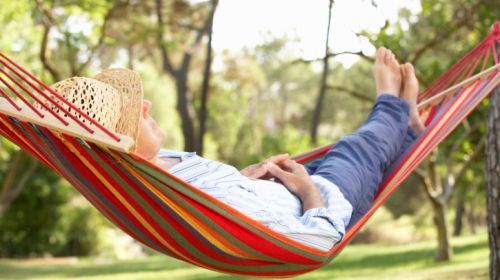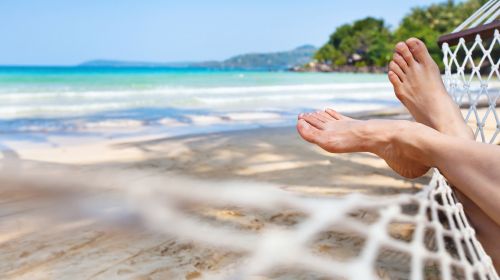Some suddenly attack them, others fear them days before they travel: With motion sickness or seasickness, symptoms such as nausea and vomiting can spoil the trip on vacation or the sailing trip.
- Children often get sick in the car. Nausea and vomiting are typical of motion sickness.
- © iStock.com/djedzura
Motion sickness, seasickness, flight sickness or travel sickness – behind these synonyms are a number of symptoms that occur when traveling. For many people, motion sickness is noticeable on winding car journeys, in strong waves on a ship or on long-haul flights.
Overview:
Which drugs help against motion sickness?
There are various medicines to combat motion sickness. The active ingredients contained suppress the vomiting center (antiemetics) and dampen the release of messenger substances (antihistamines such as dimenhydrinate), so that nausea and vomiting can subside. The active ingredients are available as plasters, chewing gum, tablets or suppositories. They have a delayed effect, so that the medication is taken for several hours, sometimes the day before the trip.
People affected by motion sickness medication should note that some active ingredients have side effects: for example, they can reduce responsiveness and make you sleepy. Also, not all travel sickness medications are suitable for children. Therefore, it should be discussed with the family doctor or pharmacist before the trip, what can be taken by whom and under what conditions.
What else can you do with motion sickness?
Motion sickness is uncomfortable, but usually harmless. If you don't want to take medication for motion sickness, you can try other measures – whether in the car, on the ship or on a plane.
That helps in the car
For example, if the child experiences nausea in the car, one should first Take a break off the track and ventilate the interior of the car, as stuffy air promotes nausea and vomiting. Moving in the fresh air can sometimes be enough to combat travel sickness. Parents can give their child cool water with lemon to drink or put a damp, cool cloth on the neck or on the forehead. Chewing gum helps against travel sickness.
Then the driver should adjust his driving style. The best thing to do is keep the child busy and not focus on the inside of the car, but on the outside. If the child seat allows it, the child can end the ride in the front passenger seat.
On the plane: distract
Do not move your head at the first sign of travel sickness, but press firmly into the headrest. Breathe calmly and evenly and look forward instead of out of the side window.
The symptoms of motion sickness are usually not as severe and persistent on the plane as on the ship or in the car. Above the clouds, it often occurs in connection with fear of flying. If you suffer from dizziness due to turbulence, you should not read, distract yourself (listen to music, watch the film), breathe calmly and drink regularly in small sips. Chew gum when taking off and landing, as this helps to equalize the pressure.
On the ship: sleep a lot
Instead of sitting in the narrow, stuffy cabin, a stay on deck, preferably in the middle of the ship, is advisable. You can fix the horizon and inhale lots of fresh air. Essential oils, lozenges and cool drinks are used to combat nausea and nausea. Known nausea remedies are, for example, ginger, lemon or peppermint. Tea made from fennel, anise and / or caraway soothes the stomach.
Even with a lot of sleep you can outsmart the seasickness, because when you sleep the sense of balance is inactive. Sea sick people should avoid alcohol, difficult to digest food, coffee and nicotine during the trip.
What is motion sickness?
Motion sickness (kinetosis) arises when the movements that our equilibrium organ registers in the inner ear and other sensors (for example on the soles of the feet and joints) do not match the visual signals received by the eyes. The brain registers contradictory information and interprets it as a danger. Stress hormones and histamines are released, physical defense mechanisms are activated and the vomiting center in the brain is activated. The result is nausea, vomiting and dizziness during the trip.
Risk factors and triggers of travel sickness
Motion sickness can occur whenever the brain detects a conflict between the senses received and the signals from the balance organ.
When driving, the risk is very high, especially on routes with lots of bends or with repeated abrupt braking and starting again in traffic jams. Typically, the driver is not affected by the travel sickness: With him, signals are sent in advance to the steering hands, where it should soon go, the inner ear and eyes can adjust to this. It usually affects the passengers in the back seat and the passenger when he reads while driving.
When it comes to air travel, it is mainly turbulence that occurs.
On the bus, winding routes, the location of the seat and, on a train journey, additional vehicles with tilting technology increase the risk of nausea and vomiting.
In addition, it is easier to get sick when traveling, if you do not look in the direction of travel, but read or look on a smartphone or tablet.
On the ship: The worst is at the bow and stern
Many modern, large ships have systems of stabilizers that balance the movements of the ship's hull on the waves. On somewhat smaller ships and sailing boats, sensitive people can get seasick even in light seas. The ups and downs of the ship combined with the rocking in the transverse axis and other ship movements together with the sensory impressions provide a multitude of contradictory information that the brain cannot process. One is particularly "at risk" of becoming seasick at the bow and stern, less in the middle of the ship.
Travel sick without any trip
Motion sickness is not always associated with a trip: It sometimes affects sensitive people with a 3D film, computer games, using virtual reality (VR) glasses, in a flight simulator or in rides such as carousels and roller coasters.
Who is affected by motion sickness?
Motion sickness does not occur in everyone. Very small children up to two years of age are rarely affected because the balance organ is not yet fully developed in them. Older people also suffer less from nausea and vomiting when traveling. They believe that the aging process has reduced the ability of the brain to perceive and the function of the balance organ.
Children between the ages of two and twelve particularly often suffer from travel sickness. In some children, the balance organ is apparently so sensitive that the centrifugal forces in curves in particular can lead to nausea.
Symptoms of motion sickness and seasickness
The symptoms of travel sickness can be felt to different degrees in different people.
- increasing discomfort
- Dizziness and lightheadedness
- fatigue
- nausea
- Vomit
- a headache
- Pale, cold sweat on the forehead
- shiver
In severe cases, symptoms range from drowsiness and apathy to depression and even fear of death.
The duration of the symptoms usually depends on the length of the trip: As a rule, the symptoms quickly disappear when the trip – i.e. the movement – is over. Sleep, rest and light meals ensure that the autonomic nervous system can recover. On sea voyages, a habituation effect usually occurs after two to three days: The body then adapts to the unusual impressions, the sensory organs, balance system and brain work in the same rhythm again.
Prevention: The best tips against motion sickness
Everyone can be affected by travel sickness and vomiting. Some measures can be taken to make it less frequent or less violent during the trip:
The trip rested and stress-free if possible kick off. Give yourself enough sleep before you start your journey, eat only light meals, avoid alcohol, nicotine and coffee.
Do not drink carbonated drinks while driving.
Those who are prone to travel sickness should if possible drive yourself, Otherwise, the passenger seat in the car is the best place for sensitive passengers.
The driver should rather drive carefully instead of sporty,
Sufficient driving breaks plan with plenty of fresh air. Full motorway service stations are not always the right place for this.
It is best to always look in the direction of travel.
Inside the plane ✈ If you are prone to nausea, it is best to sit in the middle row at the level of the wing tips.
For boat trips: If there is a possibility, it would be better to book an outside cabin with a window. Sea sick people are better off in the middle of the boat or ferry and in the fresh air during short crossings on deck.
In the bus it is best to sit in the front if you have a nausea. A gangway is ideal on the train, here you can get up more often and take a few steps.
Training against motion sickness?
The interaction between balance and brain can also be trained specifically. Especially for pilots, astronauts and military personnel, the organism is trained to withstand a wide variety of movement and sensory stimuli without nausea and other signs.
As a training for the sense of balance before the trip, trampoline jumping or dancing with many turns are ideal.



